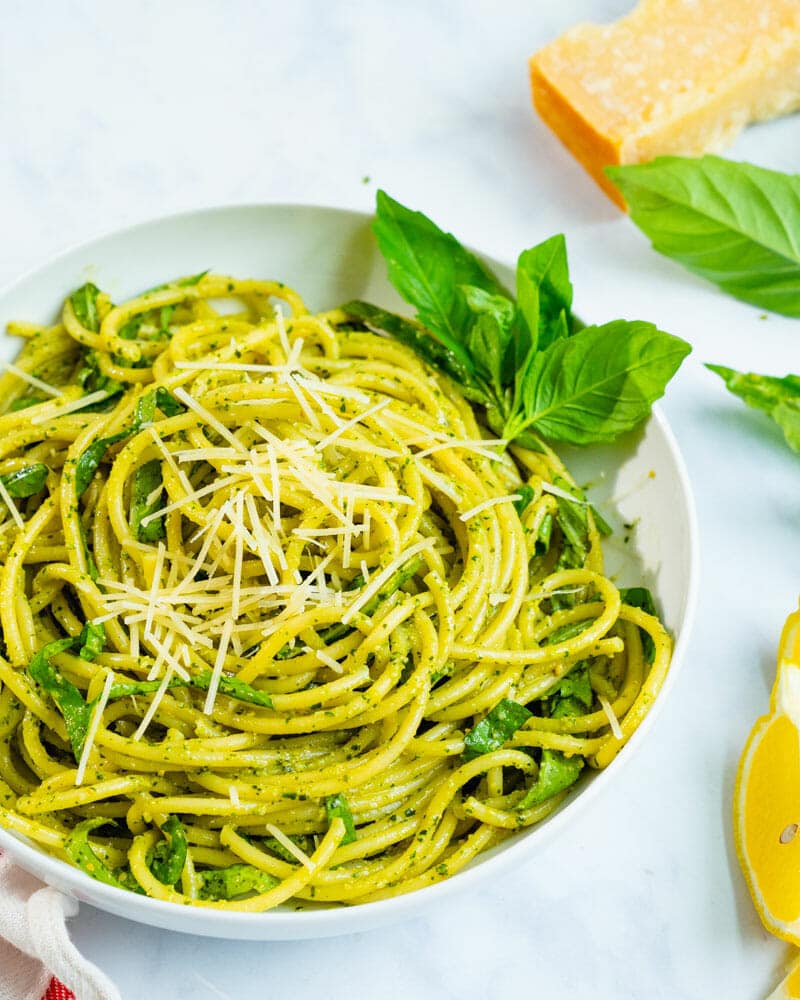
Once frozen, you can remove from the tray and place in a freezer bag for easy storage. My favorite way to freeze pesto is using an ice cube tray.
Storing pesto: You can use the pesto immediately for this recipe, store it in the fridge for 2-3 days in airtight container, or freeze it to use at a later date. Do not substitute half and half for heavy cream or the consistency will not be the same. Heavy cream: If you want the sauce more creamy add 1 additional tbsp of heavy cream. The starches that are released from the pasta while cooking, naturally help thicken sauces and make them silky smooth in texture. Reserved pasta water: Always reserve some pasta water prior to draining the pasta. It gives the pesto an extra depth of flavor and enhances the nutty flavor. Pine nuts: If you have the time, try lightly toasting your pine nuts in a small skillet. Discard the big stalks because, unlike cilantro where the stems are just as delicious as the leaves, the thick basil stems are bitter and will affect the taste of the pesto. Basil: When prepping the basil for pesto, use the leaves and the smaller/softer stems. Serve with additional cheese over the top (optional). Add in 2-3 tbsp of reserved pasta water until the pasta is fully coated with the sauce and silky. Add in the cooked/drained pasta into the pesto sauce and using tongs, carefully toss to coat the pasta. Whisk together until the sauce is smooth and fully combined. Add in the 3 tbsp of heavy cream and crushed red pepper flakes (optional, if you do not like spicy then omit). In a large skillet with high walls over medium heat, melt 2 tbsp unsalted butter, add in the pesto, and stir to combine. (To stop here and store pesto, see note #5) Blend again and add additional 2 tbsp olive oil. Open and scrape the sides with a spatula to get any leaves that might have been stuck. On high, slowly pour in the olive oil through the spout. While pasta is cooking, in a food processor add the basil leaves, garlic cloves, pine nuts, cheese, salt/pepper. Reserve ⅓ cup of pasta water and drain pasta. Bring 4 quarts of salted water to a boil, cook pasta to al dente according to package instructions. Today, we have the luxury of using a food processor, which makes this a simple, fresh way to dress pasta. Pesto is the Italian word for "pounded" and it refers to the traditional method used to prepare this type of uncooked sauce which originated in Genoa, Italy-by pounding the ingredients together in a mortar and pestle. Diced cooked, beef, pork, salmon, or any other protein, including drained firm tofu, can be added to the pesto sauce. 
Steam or flash fry 2 cups broccoli florets in olive oil for 2 to 3 minutes and add it to the pesto sauce and pasta.One-half pound raw chicken cubes can be sautéd in 1 to 2 tablespoons hot olive oil for 6 to 7 minutes or until cooked through and then mixed with the pesto sauce and pasta.Sauté 1/2 pound deveined, tailless shrimp in 1 to 2 tablespoons hot olive oil for 3 minutes. When done, mix it in with the pesto sauce and combine with the cooked pasta.
:max_bytes(150000):strip_icc()/__opt__aboutcom__coeus__resources__content_migration__serious_eats__seriouseats.com__images__2016__02__20160209-finishing-pasta-pesto-vicky-wasik-8-2-b7af0f6524a7428fb6504ed78962e0a0.jpg)
A rotisserie chicken breast and chopped tomatoes make for a heartier variation.

If the sauce is too thick, add up to 3 tablespoons water and stir to create a velvety sauce. Whisk in the pesto sauce and heat until warm, and then slowly drizzle in 1/4 cup heavy cream while whisking constantly. To alter this recipe, heat 1 tablespoon good-quality olive oil (extra-virgin isn't necessary) in a skillet over medium heat. If you're a fan of Alfredo sauces, a creamy version of pesto pasta should appeal to you.



:max_bytes(150000):strip_icc()/__opt__aboutcom__coeus__resources__content_migration__serious_eats__seriouseats.com__images__2016__02__20160209-finishing-pasta-pesto-vicky-wasik-8-2-b7af0f6524a7428fb6504ed78962e0a0.jpg)



 0 kommentar(er)
0 kommentar(er)
